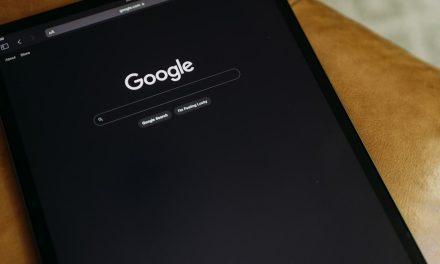Understanding the art of online visibility is essential for any business in the digital sphere, where competition is intense and attention spans are short. The terms Search Engine Optimization (SEO) and Search Engine Marketing (SEM) are frequently used in marketing conversations, but knowing their differences can have a big impact on your online strategy. Although both SEO and SEM are crucial elements of digital marketing, their functions and approaches to increasing search engine visibility differ.
Key Takeaways
- SEO and SEM are two important digital marketing strategies that help businesses improve their online visibility and attract more customers.
- SEO, or search engine optimization, aims to increase organic traffic to a website by improving its search engine rankings.
- SEM, or search engine marketing, involves using paid advertising to increase a website’s visibility on search engine results pages.
- The key difference between SEO and SEM is that SEO focuses on organic traffic, while SEM focuses on paid traffic.
- Advantages of SEO include long-term sustainability and cost-effectiveness, while disadvantages include time-consuming results and the need for continuous effort.
SEM includes paid advertising tactics, whereas SEO concentrates on organic search results, as you will learn as you learn more about online marketing. Clarifying these ideas, examining their benefits and drawbacks, and assisting you in deciding when to employ each strategy successfully are the goals of this article. By the time it’s all over, you’ll know exactly how to use SEO and SEM to improve your online visibility. The process of making your website more visible in natural search results on search engines like Google, Bing, and Yahoo is known as search engine optimization, or SEO. Increasing your website’s ranking for pertinent keywords is the main objective of SEO.
This entails a mix of off-page and on-page tactics, such as technical optimization, link development, content production, and keyword research. The goal of search engine optimization is to provide useful content that satisfies user intent while following search engine algorithms. Attracting the correct audience is the goal of SEO, which goes beyond simply increasing traffic.
Effective website optimization allows you to reach people who are actively looking for the goods or services you provide. This focused strategy increases audience trust & credibility while also increasing conversion rates. Fundamentally, SEO is a long-term investment that can produce long-lasting effects, making it a vital component of any effective digital marketing plan. On the other hand, Search Engine Marketing (SEM) includes a wider variety of marketing techniques meant to raise a website’s exposure through sponsored advertising.
While SEO concentrates on natural search results, SEM encompasses display ads, pay-per-click (PPC) advertising, and other forms of paid promotion. Google Ads is the most popular SEM platform, where companies bid on keywords to have their ads show up at the top of search results. This makes it possible for you to efficiently and rapidly contact potential clients. Getting instant traffic to your website is the main goal of SEM.
Once your campaigns are live, SEM can produce leads and conversions nearly immediately, in contrast to SEO, which sometimes takes time to show results. Because of this, it is a desirable choice for companies wishing to introduce new goods or advertise time-sensitive promotions. Also, SEM offers insightful information and useful data that can assist you in gradually improving your marketing tactics. You can improve campaign performance by examining click-through rates, conversion rates, & other metrics. Although increasing visibility on search engines is the goal of both SEO & SEM, their methods & results are very different.
The turnaround time is one of the most obvious variations. SEO is a long-term approach that calls for constant patience and work; noticeable increases in traffic & rankings may not be seen for months. For companies that require rapid visibility, SEM is the best option because it can produce results as soon as your ads go live. The cost structure is another important distinction.
The main components of SEO are time and money spent on link development, technical optimization, and content production rather than on clicks or impressions. However, because SEM charges for each click or impression your ads receive, it necessitates an ad spend budget. Therefore, SEM provides a more controlled approach to budgeting and audience targeting, even though SEO may ultimately be more cost-effective. Weighing the benefits and drawbacks of SEO is crucial when incorporating it into your digital marketing plan.
Over time, SEO’s cost-effectiveness ranks among its most important benefits. After you rank highly for pertinent keywords, you can start receiving organic traffic on a regular basis without having to pay for each click. Also, since many users prefer to click on non-sponsored links, organic search results typically gain users’ trust more than paid advertisements.
But there are disadvantages to SEO as well. Seeing results takes time, which is the biggest drawback. In contrast to SEM, which can practically instantly increase traffic, SEO takes steady work over a long time before you notice any appreciable shifts in traffic or rankings. Also, because search engine algorithms are always changing, what works now might not work tomorrow.
To stay ahead in the competitive landscape, this calls for constant learning and adaptation. You should take into account SEM’s unique set of benefits & drawbacks when developing your marketing plan. SEM’s capacity to produce traffic instantly is one of its main advantages. Using targeted advertisements, SEM enables you to swiftly reach potential customers during limited-time promotions or product launches.
Also, SEM offers strong analytics that let you monitor performance indicators in real time and make prompt campaign optimization adjustments. However, if SEM is not handled correctly, it can be expensive. Because of the pay-per-click model, each click on your advertisement results in a fee, which can mount up rapidly if your targeting & bidding tactics are careless. Also, unlike SEO, where organic traffic can persist even after you stop investing in optimization efforts, the traffic will virtually instantly stop once you stop funding your campaigns. In the long run, SEM may not be as sustainable as SEO due to its reliance on ongoing funding.
When to use SEO vs. SEM primarily depends on your timeline and business objectives. SEM is probably the better option if you have a time-sensitive offer or are seeking instant visibility.
It enables you to swiftly target particular demographics and keywords, guaranteeing that your message reaches prospective clients at the precise moment they are looking for related goods or services. However, it might be more advantageous to invest in SEO if your goal is to increase traffic and brand recognition over the long run. As you become an authority in your niche and draw in organic traffic without paying for each click, the long-term benefits can be significant, even though it takes time and constant work.
The best outcomes can be achieved by a balanced strategy that combines both tactics, ideally investing in SEO for long-term growth and using SEM for urgent needs. To sum up, both SEO and SEM are essential for improving your online visibility and increasing website traffic. You will be better equipped to choose the strategy—or combination of strategies—that best meets your company’s needs if you are aware of their definitions, goals, benefits, and limitations. Keep in mind that every strategy has special advantages that can be used in tandem with one another as you negotiate the challenges of digital marketing.
Understanding your objectives clearly is a good place to start if you want to effectively increase your online visibility. Invest in SEM while also setting the foundation for a long-term SEO strategy that will be successful if your company’s goals require results right away. On the other hand, give SEO top priority and strategically use SEM for particular campaigns or promotions if your goal is to establish a long-lasting online presence. The secret is to strike the ideal balance between these two effective tools in your digital marketing toolbox.
If you want to dive deeper into the world of SEO and SEM, I recommend checking out the article “The Ultimate Guide to SEO in 2021” on seoworld.academy. This comprehensive guide covers everything you need to know about search engine optimization, including the latest trends and strategies for boosting your website’s visibility in search engine results. It’s a must-read for anyone looking to improve their online presence and drive more traffic to their site.
FAQs
What is SEO?
SEO stands for Search Engine Optimization. It is the process of optimizing a website to improve its visibility and ranking on search engine results pages (SERPs). This is done through various techniques such as keyword optimization, content creation, and link building.
What is SEM?
SEM stands for Search Engine Marketing. It is a form of internet marketing that involves promoting websites by increasing their visibility in search engine results pages through paid advertising. This includes techniques such as pay-per-click (PPC) advertising and search engine advertising.
What are the main differences between SEO and SEM?
The main difference between SEO and SEM is that SEO focuses on optimizing a website to improve its organic (unpaid) search engine rankings, while SEM involves using paid advertising to increase a website’s visibility in search engine results pages.
Which one is better for my business, SEO or SEM?
The choice between SEO and SEM depends on your business goals, budget, and timeline. SEO is a long-term strategy that requires time and effort to see results, while SEM can provide immediate visibility but requires a budget for advertising. Many businesses use a combination of both SEO and SEM to achieve their marketing goals.
How do SEO and SEM work together?
SEO and SEM can work together to improve a website’s overall visibility and traffic. By using SEO to optimize a website for organic search and SEM to drive immediate traffic through paid advertising, businesses can achieve a comprehensive search engine marketing strategy.





